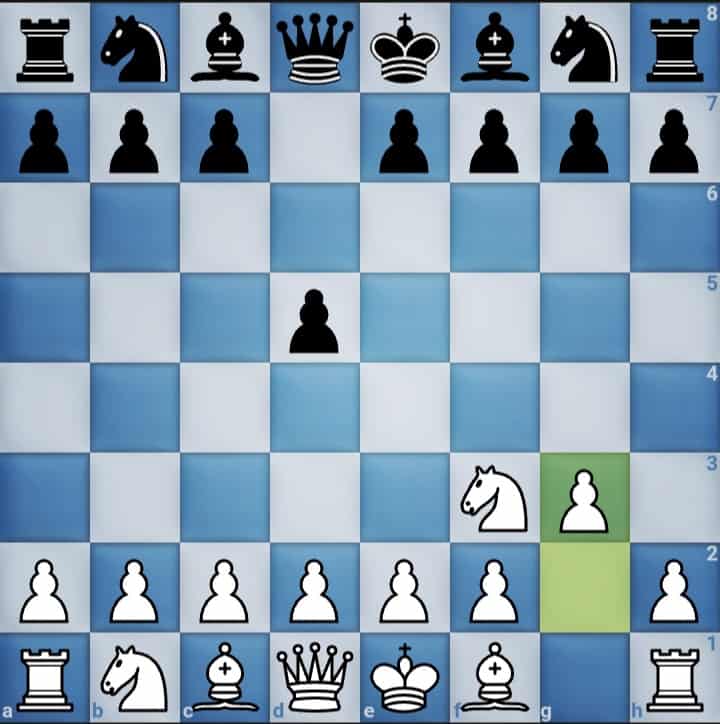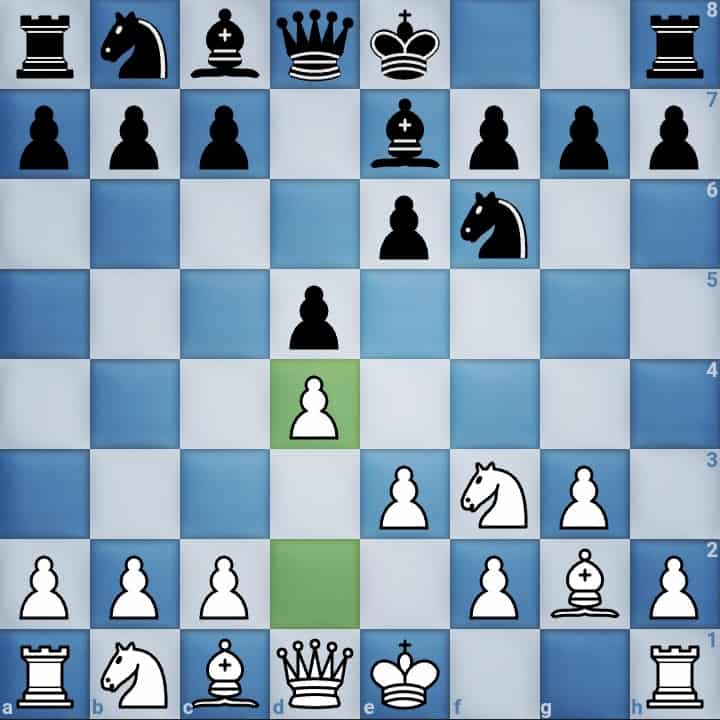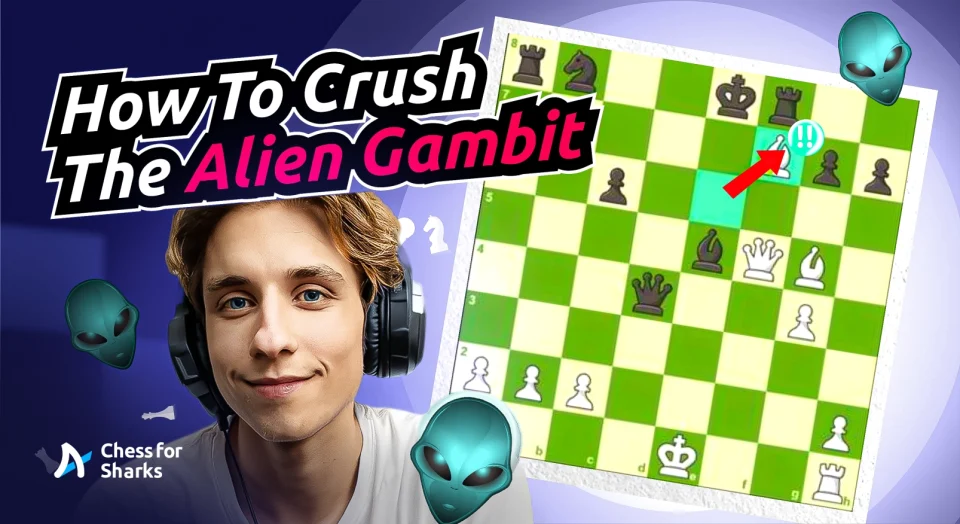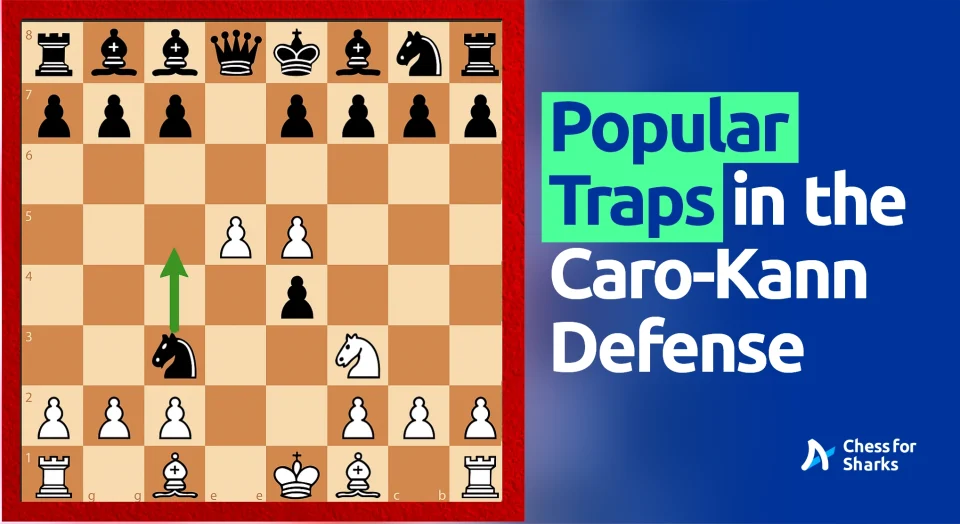The King’s Indian Attack (KIA) is a chess opening known for its flexibility and adaptability. It arises after the moves 1.Nf3 and 2.g3 by white. This opening allows White to steer the game into positions that might not be reached through traditional 1.e4 or 1.d4 openings. Let’s delve into the basics of the King’s Indian Attack:
Opening Moves
The opening sequence begins with 1.Nf3, a knight move that develops a piece and controls the central squares. The second move, 2.g3, prepares to fianchetto the bishop on the g2 square. This setup creates a strong foundation for white’s pieces and pawns.

Pawn Structure
White’s pawn structure in the King’s Indian Attack typically involves placing pawns on d3 and e4. This formation provides central control and frees the bishops and queen for active deployment. The d3 pawn supports the e4 pawn and lays the groundwork for a solid central presence.
Flexibility and Adaptability
One of the key advantages of the KIA is its adaptability. Unlike some openings that require strict adherence to a specific sequence of moves, the KIA allows white to adjust their plans based on black’s responses. This adaptability makes the KIA suitable for players of different styles, from aggressive attackers to strategic thinkers.
Development and Fianchetto
The f1 bishop is often fianchettoed to g2, allowing it to exert diagonal influence on the long h1-a8 diagonal. This setup complements the central control and provides a harmonious coordination of white’s pieces.

Central Control and Piece Activity
The central theme of the King’s Indian Attack revolves around establishing a strong central control. The pawns on e3 and d4 serve as pillars of support for White’s pieces. The knights can find excellent squares like d5, e5, or f5, exerting influence over the board and putting pressure on Black’s position.

Dynamic Possibilities
While the King’s Indian Attack is known for its solid foundations, it doesn’t shy away from dynamic possibilities. The central control established by white can lead to pawn breaks and tactical opportunities, catching opponents off-guard and initiating dynamic play.
Opening Avoidance
The King’s Indian Attack can be a strategic choice to avoid certain well-established black responses like the Sicilian Defense or the French Defense that arise after 1.e4. By sidestepping these openings, white can lead the game into more comfortable territory.
In summary, the basics of the King’s Indian Attack involve developing the knight to Nf3, fianchettoing the g2 bishop, and establishing central control with the pawn structure e3 and d4. The King’s Indian Attack’s flexibility, ability to lead to dynamic positions, and strategic nuances make it an intriguing choice for players looking to dictate the pace of the game while keeping a wide array of options at their disposal.
Strategic Themes and Concepts in The King’s Indian Attack
Strategic themes and concepts are at the heart of the King’s Indian Attack (KIA), shaping the way White approaches the opening and navigates through the subsequent middlegame. Let’s explore some of the key strategic ideas that define the KIA:
Central Control and Piece Activity
Central control is a cornerstone of the King’s Indian Attack. With the pawn structure d3 and e4, white creates a strong central presence. This allows white’s pieces to operate efficiently and exert influence over key squares. The knights often find optimal outposts on squares like d5, e5, or f5, controlling important areas of the board and contributing to both tactical threats and long-term strategic goals.
Fianchettoed Bishop
The g2 bishop is a critical piece in the KIA. By fianchettoing this bishop to g2, white enhances its scope along the long h1-a8 diagonal. This diagonal control complements the central influence of the pawn structure, and the bishop becomes a formidable force in exerting pressure on Black’s position.
Flexible Pawn Breaks
The solid pawn structure of d3 and e4 doesn’t mean a lack of dynamic possibilities. White can unleash pawn breaks like c4, leveraging central control to disrupt black’s formation and create imbalances. These pawn breaks often open lines and create tactical opportunities.
Attacking Opportunities
The King’s Indian Attack is not just about solidifying positions; it offers potential for dynamic attacking play. White’s central control and piece coordination can be used as a launchpad for launching pawn storms and piece sacrifices, putting the black king under pressure. Knowing when to switch from strategic maneuvering to tactical aggression is a crucial skill.
Harmonious Piece Coordination
The King’s Indian Attack encourages a harmonious placement of pieces. Knights, bishops and the queen work together to exert control over the board. This coordinated approach often leads to the domination of key squares and the creation of favorable imbalances.
Maróczy Bind Structure
A distinctive pawn structure that can arise in the King’s Indian Attack is the Maróczy Bind, characterized by white’s pawns on d4 and e4 versus black’s pawns on d6 and c5. This structure restricts black’s pawn breaks and offers white a long-term space advantage. Mastering the strategies within the Maróczy Bind is essential for KIA players.
Adapting to Opponent’s Choices
The King’s Indian Attack’s flexibility extends to adapting to black’s responses. Whether Black chooses a fianchetto setup, embraces a King’s Indian Defense-like approach, or opts for different pawn structures, white must be ready to adjust their plans accordingly and exploit the weaknesses in Black’s chosen setup.
The strategic themes and concepts in the King’s Indian Attack encompass central control, dynamic possibilities, coordinated piece play, and adaptability to various black responses. Understanding these themes allows King’s Indian Attack players to harness the opening’s potential for both positional maneuvering and aggressive attacks, leading to rich and engaging chess battles on the board.
Practical Advice and Tips in The King’s Indian Attack
Practicing the King’s Indian Attack (KIA) effectively involves a combination of theoretical understanding, practical experience, and a commitment to improving your skills. Here are some practical advice and tips to enhance your proficiency in playing the King’s Indian Attack:
Thoroughly Study the Opening
Develop a solid grasp of the opening’s principles, key moves, and strategic ideas. Familiarize yourself with typical pawn structures, piece placements, and common plans. This foundation will guide your decision-making throughout the game.
Analyze Master Games
Study games played by strong players or grandmasters who have successfully employed the King’s Indian Attack. Analyzing their games will provide insights into different plans, tactics, and strategies. Pay attention to how they handle black’s responses and transitions to the middle game.
Practice Regularly
Consistent practice is essential for mastering any opening. Play King’s Indian Attack variations in your games to apply your theoretical knowledge in practical situations. This will help you develop an intuitive understanding of the positions and improve your decision-making.
Experiment with Different Setups
The King’s Indian Attack allows for flexibility in piece placements and pawn structures. Experiment with different setups in your games to become comfortable with a variety of positions. This will enhance your adaptability and ability to handle various scenarios.
Maintain Central Control
Central control is a fundamental aspect of the King’s Indian Attack. Aim to control key central squares and avoid weaknesses in your pawn structure. Strong central control will give your pieces room to maneuver and exert pressure on black’s position.
Calculate Carefully
The King’s Indian Attack often involves tactical possibilities stemming from its strong central control. Practice your calculation skills to accurately assess pawn breaks, sacrifices, and tactical opportunities. Accurate calculation can lead to dynamic play and favorable outcomes.
Review Your Games
After each game, review your moves and decisions. Identify moments where you deviated from established opening principles or missed tactical opportunities. Learning from your mistakes will help you refine your understanding and improve your play.
Stay Adaptable
The King’s Indian Attack’s strength lies in its adaptability. Be prepared to adjust your plans based on your opponent’s responses and changing dynamics. This requires a flexible mindset and a willingness to switch between strategic maneuvering and tactical aggression.
Deepen Your Endgame Knowledge
The King’s Indian Attack can transition into various types of endgames. Strengthen your endgame knowledge to ensure you’re well-prepared in scenarios where material imbalances arise. Strong endgame skills can provide the decisive edge in games where this opening is employed.
Engage in Post-Game Analysis
Analyzing your games, particularly your King’s Indian Attack encounters, is invaluable. Use chess engines or seek guidance from stronger players to identify critical moments, tactical misses, and potential improvements. This reflective practice accelerates your growth.
Remember that mastering the King’s Indian Attack takes time and dedication. By consistently applying these practical tips, studying the opening’s nuances, and learning from each game, you’ll steadily improve your understanding of the opening, enhance your overall chess skills and win a lot of chess games.







join the conversation